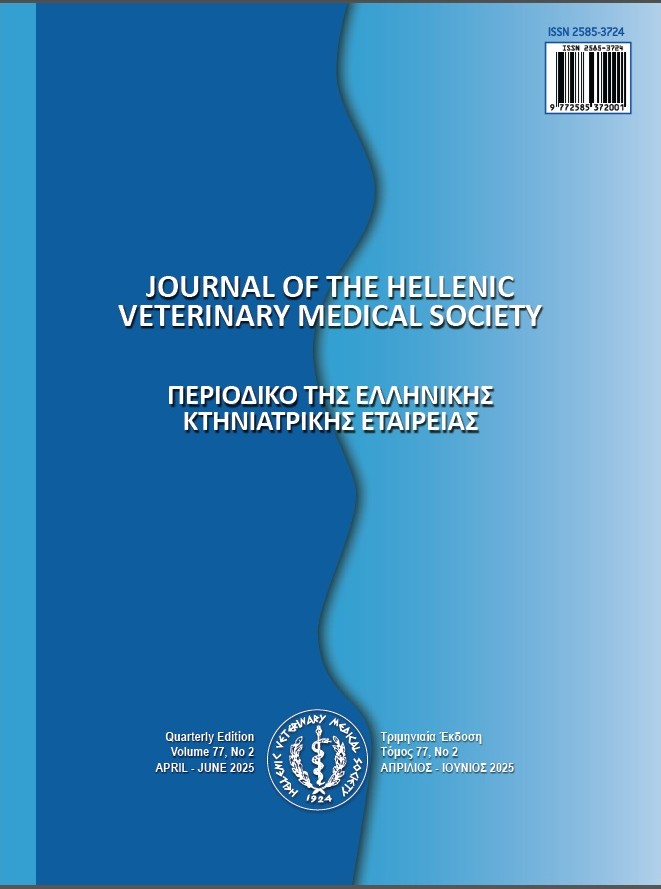Ruminal Acidosis Part II: Diagnosis, Prevention and Treatment

Abstract
Ruminal acidosis is presented as the most significant nutritional disorder of ruminants with severe impact on animal health, welfare and considerable economics losses in ovine and bovine herds. The disease is presented in two forms Acute Ruminal Acidosis (ARA) and Sub-Acute Ruminal Acidosis (SARA). This second part of the Ruminal Acidosis review focuses on the diagnosis, prevention, and treatment. The diagnosis of SARA presents several difficulties due to the non- clinically patent symptoms. Prevention and treatment are based on the amelioration of nutrition including the use of dietary supplements, and antimicrobial administration as well as the improvement of management practices.
Article Details
- How to Cite
-
Voulgarakis, N., Athanasiou, L., Psalla, D., Gougoulis, D., Papatsiros, V., & Christodoulopoulos, G. (2024). Ruminal Acidosis Part II: Diagnosis, Prevention and Treatment. Journal of the Hellenic Veterinary Medical Society, 74(4), 6329–6336. https://doi.org/10.12681/jhvms.31438
- Issue
- Vol. 74 No. 4 (2023)
- Section
- Review Articles

This work is licensed under a Creative Commons Attribution-NonCommercial 4.0 International License.
Authors who publish with this journal agree to the following terms:
· Authors retain copyright and grant the journal right of first publication with the work simultaneously licensed under a Creative Commons Attribution Non-Commercial License that allows others to share the work with an acknowledgement of the work's authorship and initial publication in this journal.
· Authors are able to enter into separate, additional contractual arrangements for the non-exclusive distribution of the journal's published version of the work (e.g. post it to an institutional repository or publish it in a book), with an acknowledgement of its initial publication in this journal.
· Authors are permitted and encouraged to post their work online (preferably in institutional repositories or on their website) prior to and during the submission process, as it can lead to productive exchanges, as well as earlier and greater citation of published work.







